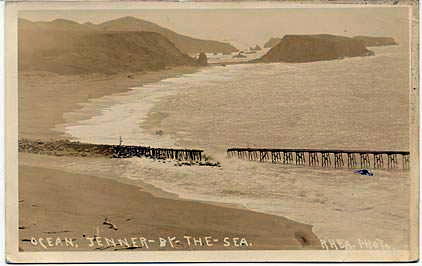Barbed Wire (aka Barbwire & Bob Wire):
Over 530 patents with over 2000 different varieties exist. Wires are cataloged by manufacturer's name and patent date, i.e. "Crandal's Champion," November 4, 1879. Most wires can be identified by the type of barbs and their twists on the wire/s. Identification encyclopedias are available. Collectable wire should be 18 inches in length. Interested or feel that you might get "hooked" on barb wire collecting? Check the Devil's Rope Museum for collector and historical information. Students and teachers working on projects will find a wealth of information here too. E-mail me for trading wire, or if you have any questions.
Wire Find!
* Hester & Belinda found a "Cady Barbed Link Wire," patented January 22, 1894, imbeded 17" into a sweet gum tree (Liquidambar styraciflua) on their property in Baldwyn, Mississippi in September 2000. The wire was stapled to the tree trunk in about 1906. In the same tree was a "Ross 4-Point," patented June 10, 1879, imbedded 15" and stapled there about 1917.
Q&A
Q1. How did you get started collecting barbed wire?
A1. In 1973 a Calif. state park ranger, Milo Shepard (a grand nephew of novelist Jack London), at Sugarloaf Ridge State Park in Sonoma County showed me his collection and "I became hooked" on the hobby.
Cut nails (aka square nails):
Originally these nails were made individually by blacksmiths from square iron rods. The rods were heated and the nailor would hammer all four sides of the softened end to form a point. The rod was then inserted into a hole in a nail header form or an anvil to create a head with several blows of a hammer. The blacksmith made these nails to augment his income when not doing work for customers. In the 1790s and early 1800s machines were developed to make the cut nails. Round nails began being produced in the 1880s.
Ever wonder why nails are sized using the term "penny" (d) -- i.e. a 6d, 8d nail? Originally "penny" was used to denote prices per hundred in England (the pence). The larger nails cost the customer more pennies. Now "penny" is a measure of length. An 8d nail is 2 and 1/2 inches long.
For Drawings of cut nails and more historic information, see the "Historic Preservation Research" site. Cut nails are still manufactured for woodcrafters and specialty construction projects. Visit "Tremont Nail" Company's web site and view their cut nail production mill and nail products. A nice cut nail display board can be purchased here.
NOTE: Square nails do not split wood as readily as round nails. To avoid splitting wood with round nails, blunt their tips with a hammer.
 |
Do you remember those days of yesteryear when cowboys and cowgirls rode their magnificant steeds into the sunset at the end of a victorious adventure? Take a trip back in time and ride with Roy Rogers & Dale Evans, Hopalong Cassidy, Tom Mix, the Lone Ranger & Tonto, Cisco Kid & Pancho, and any other riders you can remember, or can't remember, by visiting the "Cowboy Pals" website. |
Match the steeds with their riders:
STEEDS: 1. Silver?__. 2. Topper?__. 3. Scout?__. 4. Trigger? __. 5. Diablo?__. 6. Buttermilk?__.
RIDERS A. Roy Rogers B. Hopalong Cassidy C. Lone Ranger D. Tonto E. Cisco Kid F. Dale Evans
(Answers: 1C, 2B, 3D, 4A, 5E. 6F)
 |
My other collectables include Cazadero area Pomo Indian artifacts, specialized western Sonoma County postcards (Cazadero, Duncans Mills, Jenner & Fort Ross), Cazadero photographs and assortments of period memorabilia. Collected memorabillia include early ranch hand tools, relic kitchen tools, bitters bottles and anything significant to Cazadero's past. Many items are planned to be displayed in the Cazadero Historical Society Museum when it is built. (See Home Page or E-mail me for information about the planned Cazadero Community Hall and Museum.)
LATEST POST CARDS COLLECTED(Obtained in Portland, OR., Sept. 2002.): Fort Ross Block House photo post card postmarked at Cazadero Sept. 28 1923. Willy McBain of Cazadero wrote to Mrs. S. McBain at Gresham, OR. "We had fires all around us here, but the nearest was two miles from us." He was writing of the Armstrong Grove forest fire that began Sept. 17, 1923 and destroyed the wooden Kohute Gulch rail trestle and Riens' auto bridge spanning Austin Creek, Duncans saw mills, the town of Markhams, and threatened Cazadero.
NEW historic post card acquired March 2003.
Trestle built for 36" gauge railroad to haul rock from Goat Rock (in back ground) to build the Russian River jetty. Two small gasoline Plymouth engines pulled side dump cars to transport the rock. The trestle was damaged in the 1930 December storms and the jetty was never finished. Goat Rock was a peninsula before the excavation work. |
This page is still being upated, revised and added to. Check back often.
